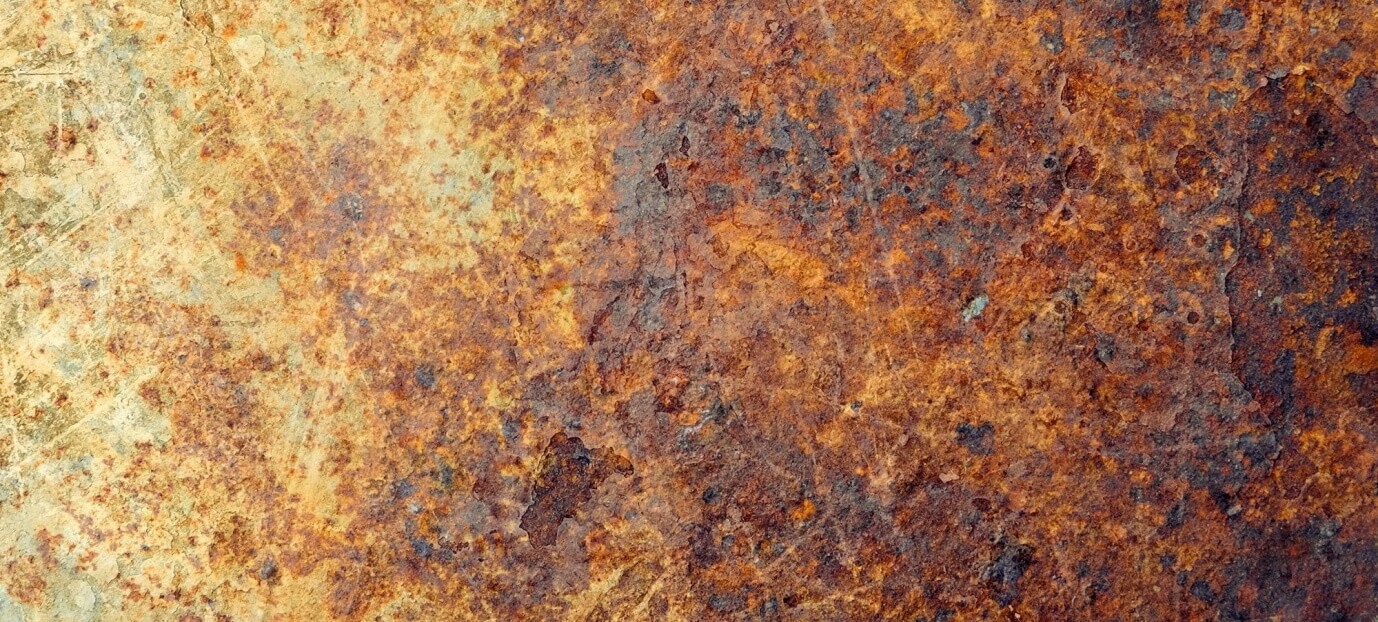Rust stains are markers of a very common drinking water problem - excessive iron, which affects many household activities, creates strong a distaste to tap water and decreases overall quality of life.
One of the most important elements for humanity
Iron is the 4th most abundant element in the Earth's crust and the cheapest metal of all. Most commonly it is found in its oxide form, but it also well easily forms other compounds like hydroxides, carbonates and sulfides. Iron is an essential element for maintaining human metabolism but for that we can`t use any iron compound. The only useful one is its organic state, literally iron in plants and meat. Iron from food and natural juices is capable of providing us with healthy bodies. Iron in tap water can only exist in its inorganic forms, which, on the contrary, act as toxic agents. When viewed within the overall toxic load of the polluted environment, this influence can be as dangerous as other poisons found in nature. FeCl2 and FeSO4 may cause toxic effects in concentrations over 200 mg.
Shady side of well waters
Because iron being so common of an element, rusty water is a widespread problem when using wells as the household water supply. Old pipes may also emit sediment into the water flow as they corrode.
Anyway, when your tap water is colored red, it certainly does not make it attractive for intake. But it is not only the aesthetics that are spoiled in your home. Similar to the effects of hard water, excessive iron might affect all the water-using appliances including water heaters and irrigation systems.
Am I safe to bathe in rusty water?
Rust forms when iron is oxidized. This compound is generally not dangerous for healthy skin as it is not absorbed. One of the main concerns is the controversial feeling of washing in visibly dirty water. Home Spa rituals have clean water as the main ingredient of the whole sensation. The presence of visible contamination in water distracts from relaxation. In the long run, regular use of rusty water for showering can influence the quality of hair and skin and make them dry. Вlonde hair even risks acquiring unwanted orange shades.
Water with iron for cleaning and cooking
The metallic taste of water can spoil culinary efforts. Taste usually is not distorted at iron concentrations lower than 0.3 mg/litre, although turbidity and colour may develop in piped systems at levels above 0.05–0.1 mg/litre. Laundry, bath and other sanitary ware start to get visible iron stains after concentrations hit 0.3 mg/litre and above.* When having obvious rust and orange flakes in your water, you should opt for a special iron filter to improve the color and taste of water.
Excessive visible sediment
Visible iron sediment in drinking water often occurs when using spring water at home. Dealing with it firstly requires a physical barrier – using pre-filtration stage. When rust particles are visible, it makes sense to use the first filter with the focus on particles larger than 5 micron. It is important to remember that a filter with the ability to detain smaller particles, such as 5 micron or less, will be clogged very soon which is not cost effective for the family budget.
*http://www.who.int/water_sanitation_health/dwq/chemicals/iron.pdf

